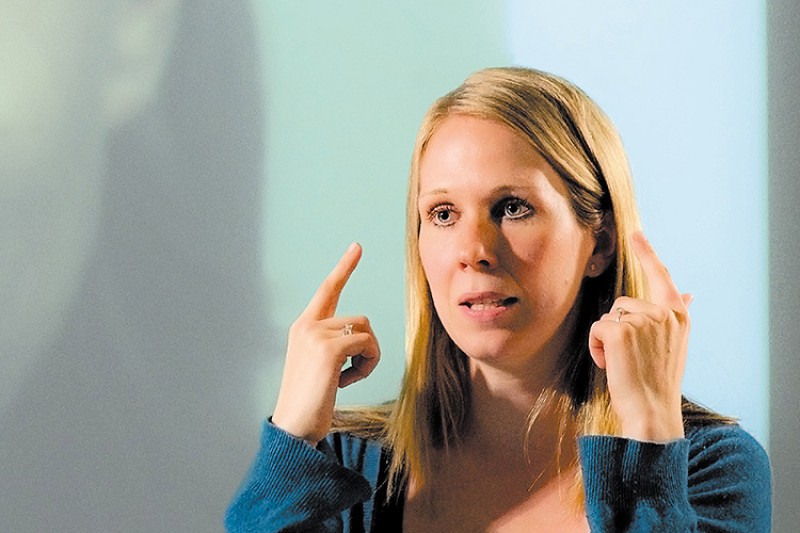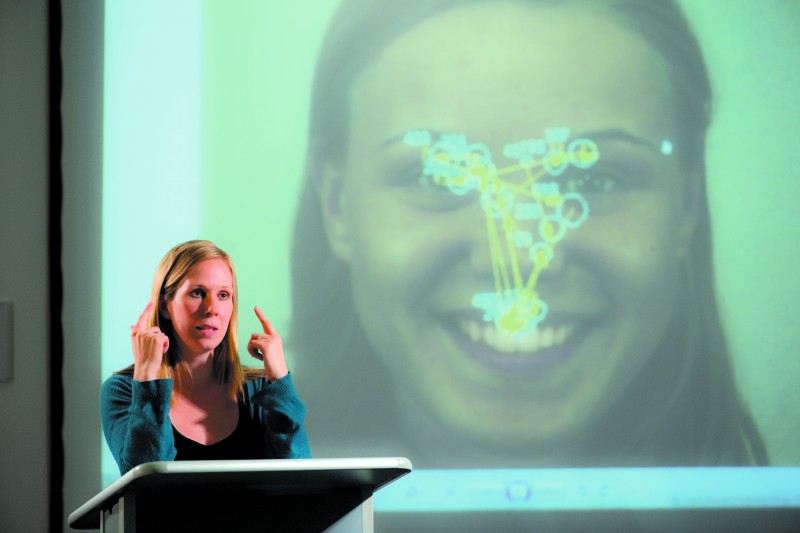Throughout history there have been multiple documented cases of people experiencing face blindness (prosopagnosia), the difficulty in seeing the differences between faces, resulting in the inability to distinguish one person from the next, be it a total stranger or their own mother. Yet it took 174 years from the first scientific recording for it to become formally recognised.
Now thanks to the work of Professor Sarah Bate, a Bournemouth University Associate Professor in Psychology and lead researcher at the Centre for Face Processing Disorders (CFPD), not only is prosopagnosia an officially recognised condition, but breakthrough cognitive training programmes have been developed to help levy some improvement in the extent of the patient’s condition.
How prosopagnosia works
When we see a person, our brain, or more specifically an area of the right temporal lobe, processes the face in a step by step manner; extracting information about that person's facial features, their expression, gender and age. We then match the face to our stored memories and either successfully identify who the person is, or if we can’t find a match, assume the person is unfamiliar. Prosopagnosia occurs if there’s an impairment to this system.
Two subtypes of the condition are thought to exist. Acquired Prosopagnosia is less common and is caused by (among other things) infection, traumatic brain injury, stroke, or brain tumour. Developmental Prosopagnosia is prevalent since birth or childhood and is thought to affect as many as one in 50 people to some extent, whether it’s struggling to put a name to a face, or being unable to recognise people they have known their whole lives. What’s more the research also suggests that people with autism may also be unable to recognise faces.
Going public
Professor Bate’s interest in prosopagnosia was piqued whilst studying at the University of Exeter, investigating the relatively unheard of condition for her final year project, which she continued to research during her Master’s and PhD studies. “The condition was believed to be rare,” she recalls. “It wasn’t until I moved to Bournemouth University (BU) to set up my own research lab that I discovered this was quite far from the truth!”
Professor Bate’s research soon gained media coverage, bringing the issue to the public’s attention, and thanks to the onset of the internet, she became inundated with enquiries from prosopagnosia sufferers all over the world. To date over 10,000 people have taken BU’s online diagnostic test and many prosopagnosics have visited the CFPD at BU in person for laboratory analysis. Using a range of equipment and processes, including electrophysiological recordings of brain activity, behavioural studies, and eye movement tracking, patients can be diagnosed, and have the option of completing the centre’s training programme.
Professor Bate gives an overview of the different forms of prosopagnosia
Getting recognised
After years of petitioning for recognition, positive change came in 2014. Following a roundtable event Professor Bates held in the House of Commons calling for greater public awareness, the National Institute for Health and Care Excellence (NICE) formally recognised prosopagnosia as an official health condition, creating a worldwide checklist to identify face blindness, which can now be found on the NHS website. “To aid the detection of prosopagnosia, we now present the first list of everyday symptoms which can be used to assist the detection of the condition in both adults and children, and in oneself and in another person,” Professor Bates explains. “Our checklist, also provides parents and professionals with a tool that they can use to potentially spot face blindness in a child, and then refer them on for appropriate formal testing. We believe, based on the reflections and past experiences of people we have spoken to, that the condition can be detected in children as young as 2-3 years of age.”
Professor Sarah Bate
Associate Professor in Psychology
The condition was believed to be rare. It wasn’t until I moved to Bournemouth University to set up my own research lab that I discovered this was quite far from the truth!
Further investigation
Although prosopagnosia has no cure currently, Professor Bate and her team continue to explore the condition, investigating (among other things) whether the hormone oxytocin could improve face recognition in the longer term, as clinical trials at the university have encouragingly shown short-term improvement.
Another branch of investigation is to study the opposite end of the spectrum, so-called ‘super-recognisers’, who have above average abilities when it comes to recognising faces, in an attempt to understand if prosopagnosia is a developmental disorder or a sliding scale of ability.
Early intervention is another key area of focus for the centre, which has discovered that developmental face blindness could be influenced by factors such as not having glasses at a critical time when young or even being deprived of social interaction as a baby. “The main aim of developing better diagnostic tools for children is so that we can improve early intervention treatments for them. As with many conditions, the earlier interventions can be made, the more likely they are to succeed.”
For more information visit the research team’s website.



